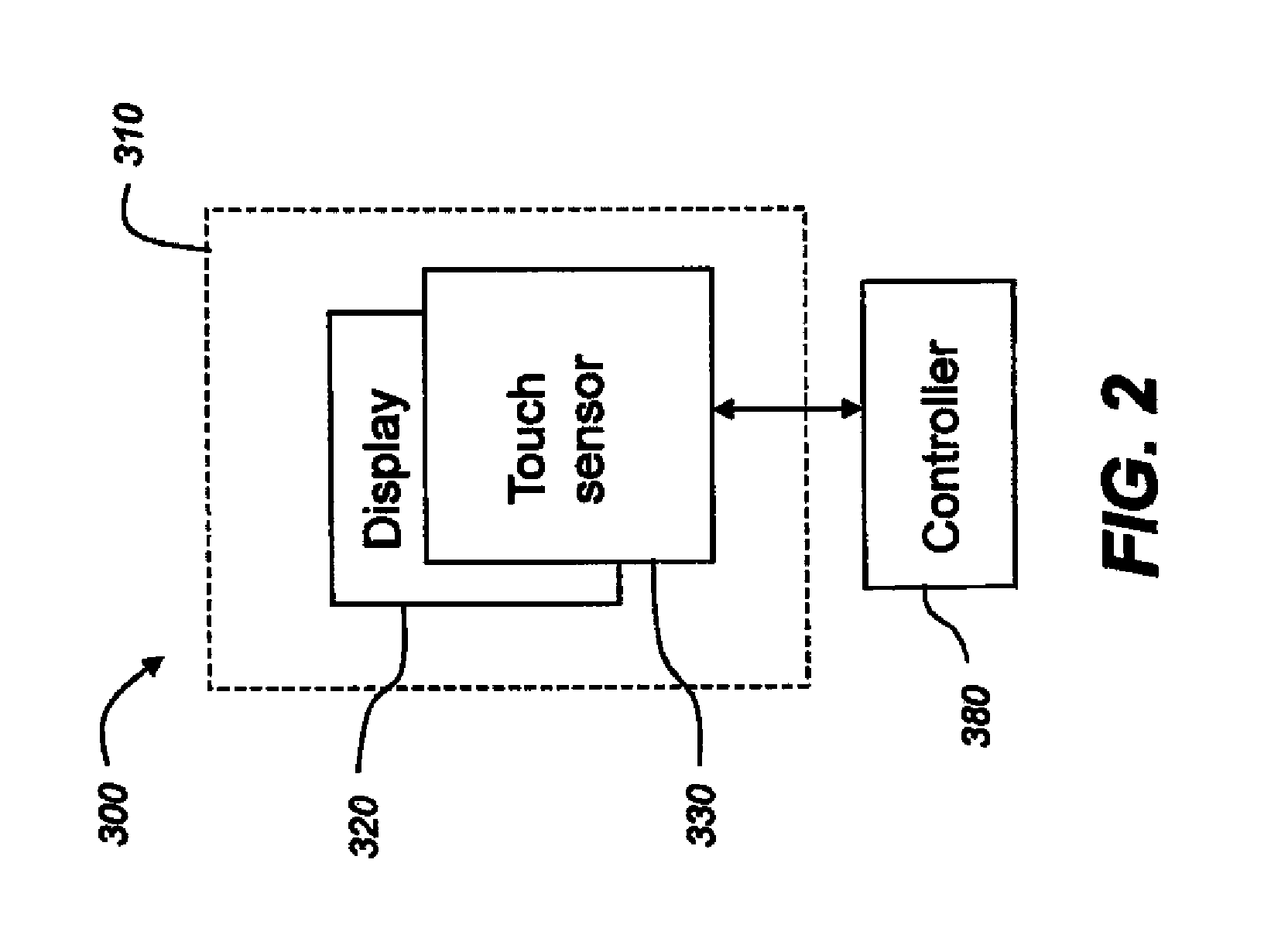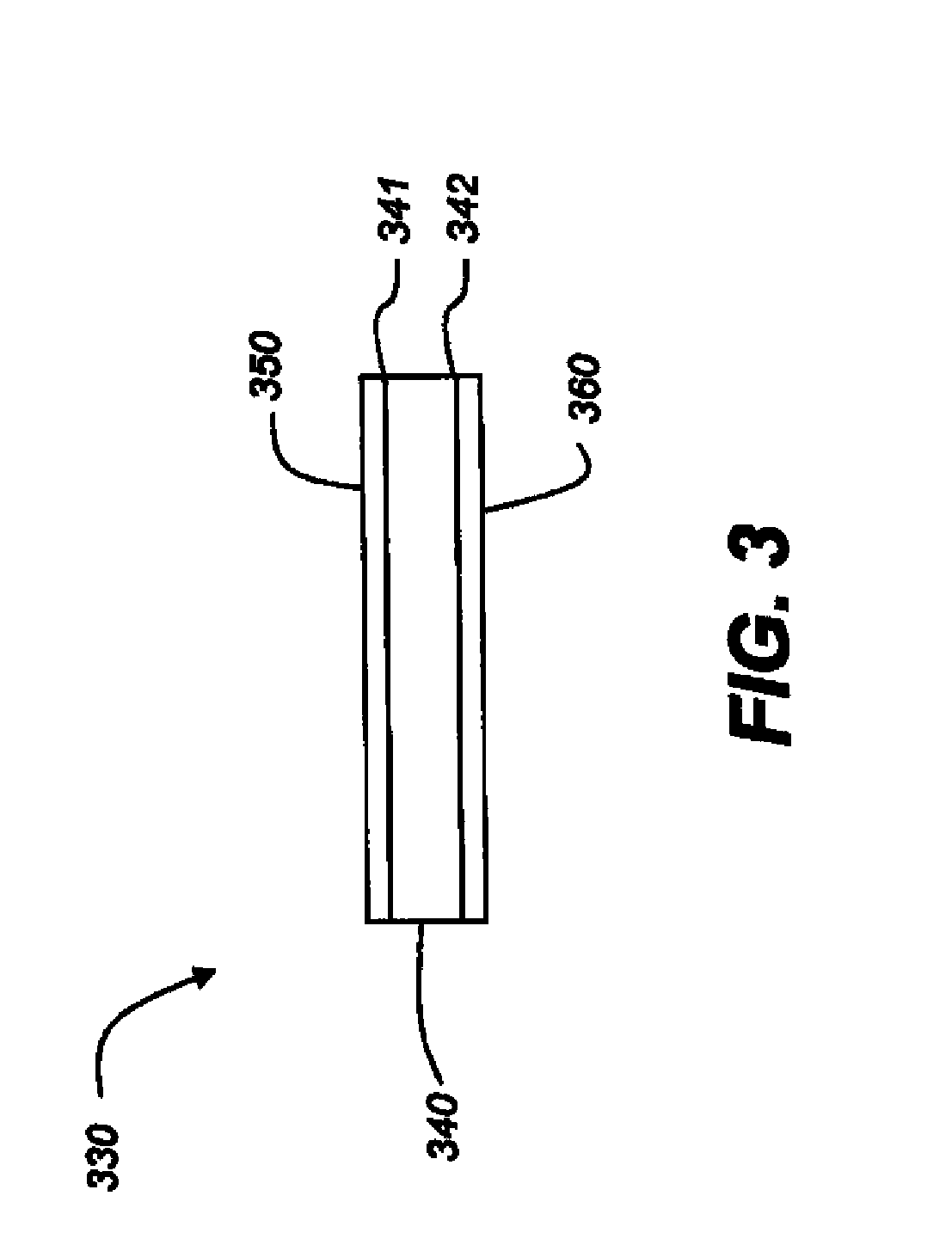Photopolymerizable compositions for electroless plating methods
- Summary
- Abstract
- Description
- Claims
- Application Information
AI Technical Summary
Benefits of technology
Problems solved by technology
Method used
Image
Examples
invention example 1
[0346]A photopolymerizable composition of the present invention comprising the (a) through (e) components was prepared by mixing 16 weight % of epoxy acrylates CN 153 (from Sartomer), 1 weight % of a mixture of sulfonium salts (from Aldrich), 3 weight % by weight acid indicator 4,4-diemthylamino benzhydrol (described above), 0.001 weight % of electron acceptor photosensitizer fluorenone (S-4), 3 weight % of electron donor co-initiator ethyl-4-(dimethylamino) benzoate (EDAB, Aldrich), and 22 weight % of silver particles (from Novacentrix, said to have 20 nm average particle size) in 55 weight % 2-methoxy isopropanol organic solvent. The resulting photopolymerizable composition was coated onto a glass plate substrate and dried to form a dry film of about 0.5 mm thickness, and the resulting article was then irradiated using 200 W medium pressure mercury lamp providing radiation at a wavelength between 313-340 nm using a narrow band-pass filter. The acid indicator that was present after...
invention example 2
[0348]Another photopolymerizable composition of the present invention comprising the (a) through (e) components was prepared by mixing 16 weight % of epoxy acrylates CN 153 (from Sartomer), 1 weight % of a mixture of sulfonium salts (from Aldrich), 3 weight % of acid indicator 4,4-diemthylamino benzhydrol (shown above), 0.001 weight % of electron acceptor photosensitizer benzophenone (S-12), 3 weight % of electron donor co-initiator ethyl-4-(dimethylamino) benzoate (EDAB, Aldrich), and 22 weight % of silver particles (from Novacentrix, said to have 20 nm average particle size) in 55 weight % of 2-methoxy isopropanol organic solvent. The photopolymerizable composition was coated on a glass plate substrate to form a dry coating (film) having about 0.5 mm thickness coating. The resulting article was then irradiated using a 200 W medium pressure mercury lamp providing a radiation wavelength of between 313-340 nm using a narrow band-pass filter. The acid present after irradiation was mea...
invention example 3
[0350]Still another photopolymerizable composition of the present invention having components (a) through (e) was prepared by mixing 16 weight % of epoxy acrylates CN 153 (from Sartomer), 1 weight % of a mixture of sulfonium salts (from Aldrich), 3 weight % of acid indicator 4,4-diemthylamino benzhydrol (shown above), 0.001 weight % of electron acceptor photosensitizer 1,4-dicyanonaphthalene (S−1), 3 weight % of ethyl-4-(dimethylamino) benzoate (EDAB, Aldrich), and 22 weight % of silver particles (from Novacentrix, said to have 20 nm average particle size) in 55 weight % of 2-methoxy isopropanol organic solvent. The resulting polymerizable composition was coated on a glass plate substrate to form a dry film having about 0.5 mm thickness. The resulting article was then irradiated using a 200 W medium pressure mercury lamp providing irradiation wavelength of between 313-340 nm using a narrow band-pass filter. The acid present generated by irradiation was measured using the leuco dye m...
PUM
 Login to View More
Login to View More Abstract
Description
Claims
Application Information
 Login to View More
Login to View More - R&D
- Intellectual Property
- Life Sciences
- Materials
- Tech Scout
- Unparalleled Data Quality
- Higher Quality Content
- 60% Fewer Hallucinations
Browse by: Latest US Patents, China's latest patents, Technical Efficacy Thesaurus, Application Domain, Technology Topic, Popular Technical Reports.
© 2025 PatSnap. All rights reserved.Legal|Privacy policy|Modern Slavery Act Transparency Statement|Sitemap|About US| Contact US: help@patsnap.com



